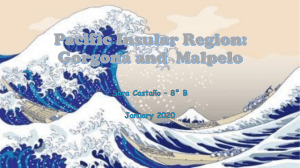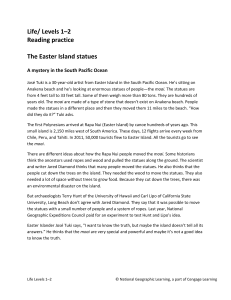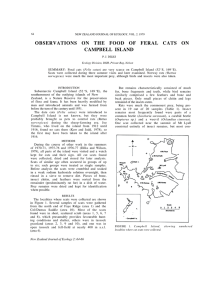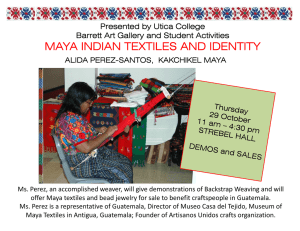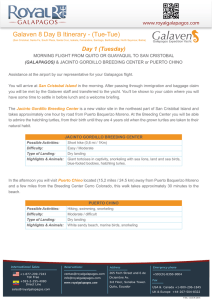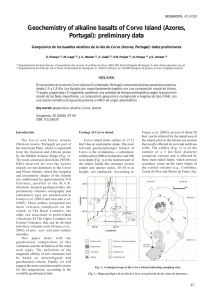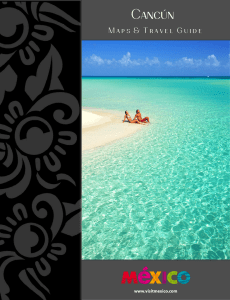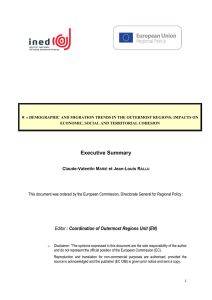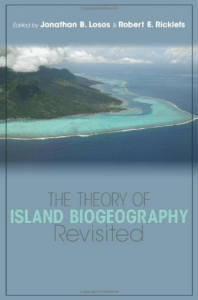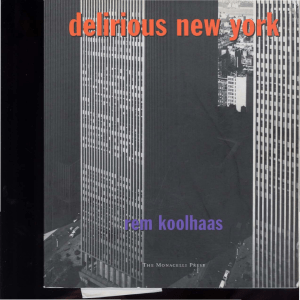Some Historic Notes on the Names of Isla Cancun
Anuncio
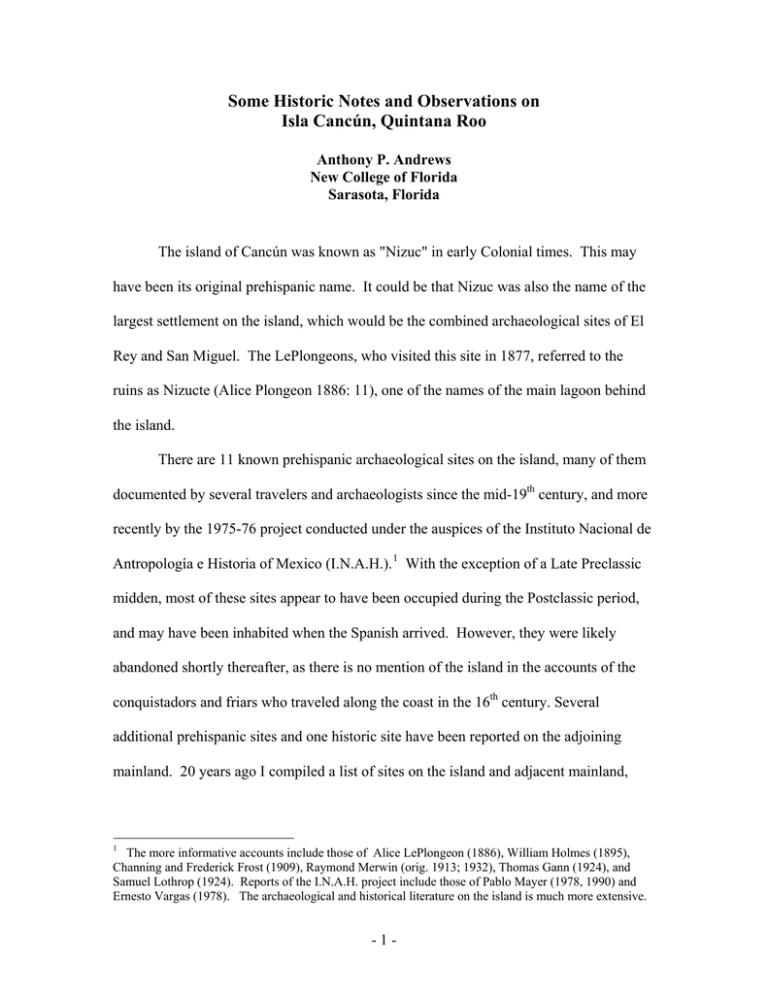
Some Historic Notes and Observations on Isla Cancún, Quintana Roo Anthony P. Andrews New College of Florida Sarasota, Florida The island of Cancún was known as "Nizuc" in early Colonial times. This may have been its original prehispanic name. It could be that Nizuc was also the name of the largest settlement on the island, which would be the combined archaeological sites of El Rey and San Miguel. The LePlongeons, who visited this site in 1877, referred to the ruins as Nizucte (Alice Plongeon 1886: 11), one of the names of the main lagoon behind the island. There are 11 known prehispanic archaeological sites on the island, many of them documented by several travelers and archaeologists since the mid-19th century, and more recently by the 1975-76 project conducted under the auspices of the Instituto Nacional de Antropología e Historia of Mexico (I.N.A.H.). 1 With the exception of a Late Preclassic midden, most of these sites appear to have been occupied during the Postclassic period, and may have been inhabited when the Spanish arrived. However, they were likely abandoned shortly thereafter, as there is no mention of the island in the accounts of the conquistadors and friars who traveled along the coast in the 16th century. Several additional prehispanic sites and one historic site have been reported on the adjoining mainland. 20 years ago I compiled a list of sites on the island and adjacent mainland, 1 The more informative accounts include those of Alice LePlongeon (1886), William Holmes (1895), Channing and Frederick Frost (1909), Raymond Merwin (orig. 1913; 1932), Thomas Gann (1924), and Samuel Lothrop (1924). Reports of the I.N.A.H. project include those of Pablo Mayer (1978, 1990) and Ernesto Vargas (1978). The archaeological and historical literature on the island is much more extensive. -1- along with a preliminary bibliography of each site (Andrews 1986). A complete bibliography and detailed history of explorations on the island has yet to be published, Nizuc appears in a 1604 document as one of the places in the jurisdiction of the Partido of Chancenote where Indian refugees were living and practicing idolatry. It is clearly on the east coast, as it listed along with Mochi, which was another coastal town south of the modern port of Puerto Morelos (cited in Solís and Peniche 1996: 29). In 1610, Juan de Contreras Durán, the son of the conquistador Juan de Contreras, took part in an expedition against some English corsairs at the island of “Nicuco,” which was most likely the island of Cancún ( Roys, Scholes, and Adams 1940: 13). Nizuc was also reported as an island by Pedro Sánchez de Aguilar in 1636 (orig. 1639; 1937: 120). The name survives to this day as that of the southern point of the island, now commonly referred to as "Punta Nizuc" (or Nisuc). I do not know what Nizuc or Nisuc means in Maya. According to the Diccionario Maya Cordemex, one set of related meanings of “Ni” includes “cabo de tierra en la mar,” “cabo,” or “punta,” (Barrera Vásquez et al 1980: 567), all of which can be translated as cape or promontory, which makes good sense. A number of promontory names around the peninsula begin with the syllable “Ni.” (Punta Nikú, Punta Nimún, Punta Nitún, Punta Nichehabín, etc.; there is also a Punta Nixtún on the western end of Lake Petén Itzá, and the port of Nito, on a promontory at the mouth of the Rio Dulce). However, the meaning of the second syllable eludes me. To the best of my knowledge, the name "Cancun Y." (Y = Ysla) first appears on the 1734 Guelle Map. It later appears on the 1754 Bellin map as “I. de Canzun.” "Y Cankun" is given for the island in the 1766 González Map, where the southern point is -2- labeled as "Nisuc." It subsequently appears on several late 18th and 19th century maps as “Cancun” or “Cancum." Miguel Molas uses the word "Cancum" in his coastal itinerary, which he wrote in 1817 (1845:124), and the island is referred to as "Kankum" in the Itinerario of 1851, which also notes that the southern point is called "Punta de Nisuc" (Anónimo 1851: 26). In sum, all known maps from the mid-eighteenth century onwards label the island as Cancun, or some variant of that name, and more detailed maps and traveler accounts refer to the southern point as Nizuc, Nisuc, Punta Nizuc, or Boca Nizuc. 2 The southern point has (or had in 1981) the remains of two masonry shrines, now on the grounds of the Club Med, which cover the entire southern point. The site is registered as Punta Nizuc. The northern point of the island has long been known as Punta Cancún, or Punta Nikú, and there is also a vaulted masonry shrine and the remains of another building there. The ruins at the northern and southern ends of the Island were first reported by the English naval officer Captain Richard Owen in 1833 (Allen 1841: 78-79). Aside from the occasional group of refugees, the island was largely abandoned during the Colonial Period and most of the 19th century. However, there may have been a fishing camp at the southern point at Nizuc, as this point sheltered a natural harbor, or anchorage (fondeadero) known as the Boca de Nizuc,2 for boats traveling down the coast, since Colonial times. They would often put into the cove on the south side of the point to spend the night, or take refuge in times of bad weather. When the LePlongeons visited the island in 1877, they found it abandoned, save for a group of four visitors from Isla 2 The “boca” refers to the mouth of the short river that leads from the cove at the south end into the interconnected lagoons behind the island. Another short river at the north end of the island leads from the main lagoon out to the Bay of Isla Mujeres. The mouth at the northern end is known as the Boca de Nichupté (or Nisucté, or Nizucté), a name it shares with the main lagoon. It is these lagoons and the two rivers that separate Cancún from the mainland and render it an island. -3- Mujeres who were camping out for a few days near the ruins of Nizucte (El Rey-San Miguel), where they were harvesting guano palm leaves (A. LePlongeon 1886: 11-12). At some point in the late 19th century, a family from Isla Mujeres planted a cocal, or coconut grove, which eventually extended along the entire length of island. A rancho, where a caretaker and his family lived, was located about halfway down the island, next to the ruins of El Rey-San Miguel, on the lagoon side, behind the dunes. William Holmes, in his visit to the island in 1895, notes the presence of a single hut, a coconut grove, and some “patches of Indian corn” (1895: 63). This rancho occasionally had more than one family, as the harvesting of the copra often required more workers. In the 1960s there were several huts and a lagoon-side pier at the rancho. My family visited the rancho and island several times starting around 1962, and my father directed the excavation of the Preclassic shell midden site near the northern end of the island in 1963 (Andrews IV et al 1974). The shell midden site is commonly referred to as "Conchero de Cancún" in the Spanish literature, and was given the name "Yox Xixím" by the INAH archaeologists who worked on the island during the 1970s (Mayer 1990). Developers began clearing the land for Ciudad Cancún in 1970, and may have cut the first road and built the northern bridge out to the island that year or the next. The rest is modern history. It is not known what the origin or meaning of the name Cancún is, or if is a true Maya word, as it a Colonial period toponym. I have heard many different translations of the name, though none sound all that convincing. If it is a Maya word, the simplest phonetic transcription would be Kankum, and the Diccionario Maya Cordemex offers several possibilities; in my mind the most likely possibilities are enchanted or haunted -4- snake or serpent (Barrera Vásquez et al 1980: 296-97). The elongated shape of the island might easily conjure up the image of a snake, and to judge from the number of shrines on the island, it was clearly a place of religious significance with a pervasive ritual aura about it. Maya visitors to the ruins of island in the Colonial period would have good reason to believe it was haunted or enchanted, especially after seeing the numerous sculptures of humans and creatures at El Rey. Alice LePlongeon reported that the largest structure at Nizucte/El Rey had a temple “at the entrance of which were two enormous snake heads made of concrete” (1886: 13). It would appear that snakes or serpents were a major icon at the site, and this too would have impressed Colonial visitors. Thus it would not have been surprising if the island came to be known as something akin to “Island of the Enchanted Serpent.” However, there is no evidence at present that this was its name in prehispanic times. -5- -6- References Allen, Bird 1841 Sketch of the Eastern Coast of Central America, compiled from the notes of Captain Richard Owen and the Officers of Her Majesty's Ship Thunder and Schooner Lark. Journal of the Royal Geographic Society, 11: 76-89. London. Andrews, Anthony P. 1986 Reconocimiento arqueológico de Cancún a Playa del Cármen, Quintana Roo. Boletín de la Escuela de Ciencias Antropologicas de la Universidad de Yucatán, 13 (78): 3-19. Andrews IV, E. Wyllys, E.W. Andrews V, M.P. Simmons, and E.S. Wing 1974 Excavation of an Early Shell Midden on Isla Cancun, Quintana Roo, Mexico. Middle American Research Institute, Pub. 31: 147-97. Tulane University, New Orleans. Anónimo 1851 Itinerarios y Leguarios que proceden de Mérida capital del Estado á las vigias de su parte litoral; á las cabeceras de los partidos que lo componen; de estas á las que son limitrofes; y de los puntos más notables de su costa. Tipografía a cargo de Manuel Mimenza, Mérida. Antochiw, Michel 1994 Historia Cartográfica de la Península de Yucatán. Centro de Investigación y de Estudios Avanzados del I.P.N. Grupo Tribasa. Gobierno del Estado de Campeche. Mexico. Arnold, Channing, and Frederick. J.T. Frost 1909 The American Egypt: A Record of Travel in Yucatan. London. Barrera Vásquez, Alfredo, et al. 1980 Diccionario Maya Cordemex. Ediciones Cordemex, Mérida. Bellin, Jacques N. 1754 “Carte de Provinces de Tabasco, Chiapa, Verapaz, Guatemala, Honduras et Yucatan.” From L’Histoire General des Voyages, by A.F. Prevost, Tom. XII, No. 6. Didot, Paris. Several printings and later editions, published in a variety of sources. Gann, Thomas W.F. 1924 In an Unknown Land. Duckworth, London. González, Juan de Dios 1766 "Plano de la Provincia de Yucatán." British Museum, Mss. Add. 17.654, A. In Roys, Scholes, and Adams 1940 (section only); also published in several other sources. Guelle, Joseph de 1734 "Plano de la Provincia de Yucathan." Servicio Geográfico del Ejército, Madrid. In Cartografía de Ultramar (1955). Servicio Geográfico e Histórico del Ejército, Madrid. Also in Antochiw 1994: Lamina XXIX. -7- Holmes, William H. 1895 Archaeological Studies amoung the ancient cities of Mexico. Part I: Monuments of Yucatan. Anthropological Series, 1. Field Museum of Natural History, Chicago. Le Plongeon, Alice 1886 Here and There in Yucatan. Boston. Lothrop, Samuel K. 1924 Tulum. An Archaeological Study of the East Coast of Yucatan. Carnegie Institution of Washington, Pub. 335. Washington, D.C. Mayer Guala, Pablo M. 1978 Cancún. Guia Official. I.N.A.H., Mexico. 1990 La Arqueología de Cancún. La Relación Arquitectura-Cerámica. Tesis de Maestría en Arqueologia. Escuela Nacional de Antropología, Mexico. Merwin, Raymond E. 1932 Architectural Remains along the Coast of Quintana Roo: A Report of the Peabody Museum Expedition, 1913-1914, Compiled from the Field Notes of R.E. Merwin, by J.M. Yde. Ms., on file in the Peabody Museum, Harvard University, Cambridge. Molas, Miguel 1845 Las Costas de Yucatán. Derrotero de la península de Yucatán, de todas sus costas, islas, bajos, puertos y arrecifes, trabajado por la práctica, experiencia y cumplido de D. Miguel Molas en el año de 1817. Registro Yucateco, I: 121-30. Mérida. Roys, Ralph L., France V. Scholes, and Eleanor B. Adams 1940 Report and Census of the Indians of Cozumel. Carnegie Institution of Washington, Pub. 523 (Contr. 30). Washington, D.C. Sánchez de Aguilar, Pedro 1639 Informe contra Idolorum Cultores del Obispado de Yucatán. Viuda de Juan González, Madrid. 1937 Informe contra Idolorum Cultores del Obispado de Yucatán. 3rd edition. Mérida. Solís Robleda, Gabriela, and Paola Peniche 1996 Idolatría y sublevación. Universidad Autónoma de Yucatán, Mérida. Vargas Pacheco, Ernesto 1978 Los asentamientos prehispánicos y la arquitectura en la isla Can Cun, Quintana Roo. Estudios de Cultura Maya, XI: 93-112. U.N.A.M., Mexico. -8-
